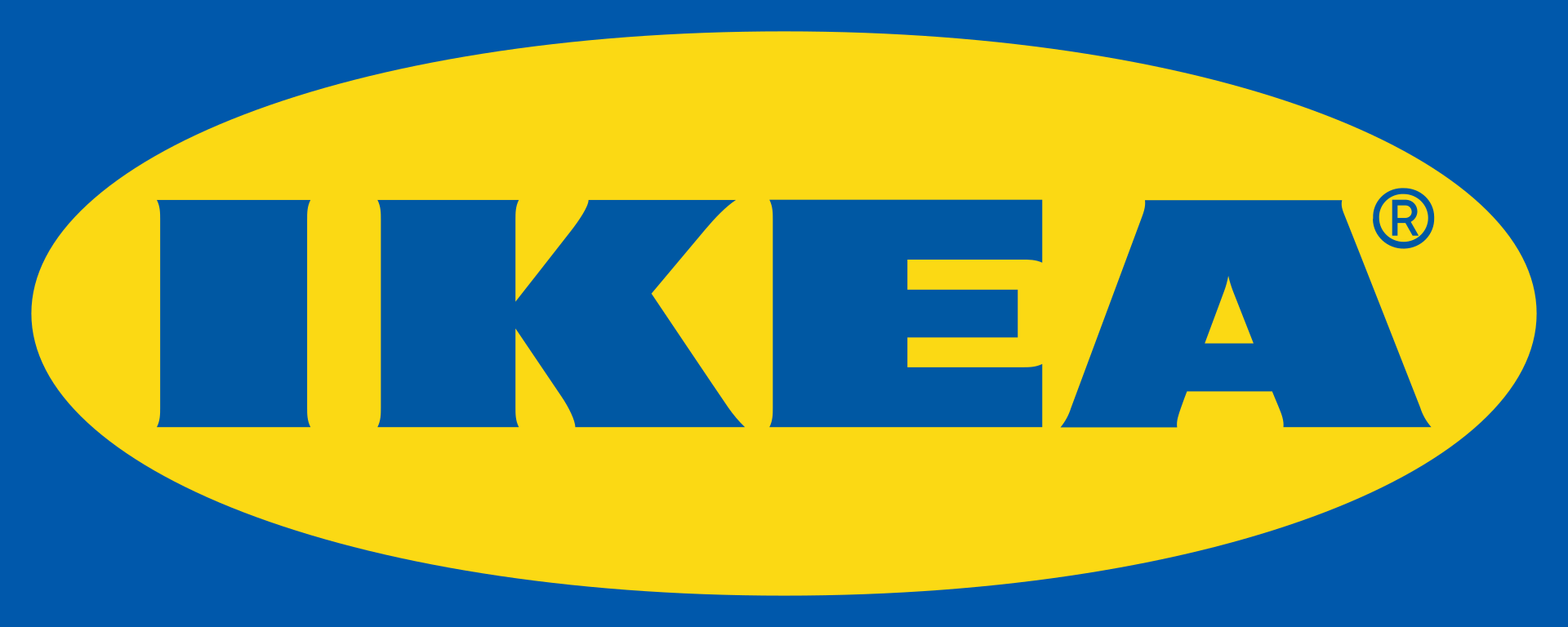IKEA is a global company known for its ready-to-assemble DIY furniture. IKEA was the product of diligence, perseverance, and innovation of its Swedish founder Ingvar Kamprad. He was born on March 30, 1926, in Pjätteryd (now part of Älmhult Municipality, Sweden), and was raised at a farm named Elmtaryd, which is located in a small village called Agunnaryd. Even when he was still young, Kamprad knew that the world of business was meant for him.
Throughout his career, Kamprad was known for his frugality, simplicity, and dedication to his company’s ethos. Despite his immense wealth, he maintained a modest lifestyle, which was reflective of the principles that underpinned IKEA’s corporate culture. Kamprad’s leadership saw IKEA expand globally, becoming one of the world’s largest and most recognized furniture retailers. His contribution to the retail and design world made him one of the most influential figures in modern business. Ingvar Kamprad passed away on January 27, 2018, leaving behind a legacy that fundamentally altered how people furnish their living spaces.
At the age of five, Kamprad started selling matches to neighbors. He found out that he could buy matches in bulk at a very low price, and would sell them at low retail price but he still made a decent profit. From selling matches, Kamprad eventually began to sell other items that ranged from fish to Christmas decors to seeds. Later on, he also started selling school items like pens and pencils.
In 1943, when Kamprad was 17, his father gave him cash as a reward for doing well in school. He used the money to found IKEA — the name rose from the initials of his name I(ngvar) K(amprad), and the initials of the places where he grew up: E(lmtaryd) and A(gunnaryd).
During the first few years of IKEA, Kamprad started to sell and deliver his merchandise by using milk trucks. By 1947, he began to diversify his business by adding furniture made by local manufacturers. Soon, IKEA furniture spread its popularity. However, IKEA eventually faced boycotting by other manufacturers because of the furniture’s very low price, forcing Kamprad to design the furniture at his own warehouses.
Kamprad began to introduce the revolutionary ready-to-assemble furniture, also known as the “flat pack” furniture. Thus, this gave birth to the unique IKEA concept of simple, practical and affordable “do-it-yourself” furniture which could be purchased in “flat packs.” Despite being affordable and uncomplicated to build, these flat-pack furniture items didn’t sacrifice quality and style — and many people thought that IKEA’s items signaled the advent of the “modernist” furniture.
From then on, IKEA began to expand outside Sweden. In the 1960s the company began opening stores in other Scandinavian countries such as Norway and Denmark. In the 1970s, IKEA started to expand outside Scandinavia, opening its first stores in Germany and Switzerland, and eventually in other European countries.
In 1974, IKEA broadened its market beyond continental Europe. In 1974, it opened its first Asian store in Japan, and the following year it unveiled its first Australian shop near Sydney and its first North American branch in Dartmouth, Nova Scotia, Canada.
It seemed there was no stopping IKEA’s growth. In the 1980s, it expanded further to other countries such as the UK, Italy, France, Spain, Belgium, and the United States. When IKEA opened its first Shanghai branch, more than 80,000 shoppers were present. In 2010, the company opened its first Latin American branch in Santo Domingo, Dominican Republic.
Germany remains IKEA’s biggest market with 50 stores to date, while the United States comes at a close second with 44 stores so far. The biggest IKEA store is currently found in Gwangmyeong, Gyeonggi in South Korea, with its floor space measuring 59,000 square miles (or 640,000 square feet).
Today, there are over 300 IKEA locations in 38 countries. Its headquarters are now located in Delft, the Netherlands. Amid the company’s stratospheric success, Kamprad had never borrowed money or issued any stocks.
Kamprad had already stepped down from the board in 2013, and his youngest son had taken over the chairmanship of the company. Despite his resignation and his advanced age, Kamprad still traveled a lot around the world to visit IKEA branches. Kamprad was one of the wealthiest people on the planet — a March 2010 issue of Forbes ranked him at 11th place on its list of the world’s richest people. In spite of his envy-worthy wealth, Kamprad still lived simply and frugally — he still stayed at cheap hotels that he could find, and still drove his old Volvo.
Kamprad passed away peacefully at his home in Småland, Sweden on January 27, 2018. He was 91.
Like many other global companies, IKEA has had its shares of allegations, namely poor customer service, miserable working conditions and poor environmental practices (especially a highly-publicized scandal regarding the company’s use of formaldehyde in its products during the 1980s). But IKEA seems adept in dodging these issues very well.
IKEA may now be universally known for its smart, economical and highly customizable furniture, but the company has also diversified its products and services from flat-pack houses to retail to food stores.
Cultural Impact and Store Experience
IKEA has not just been a retailer but a cultural phenomenon. The store experience, distinctively IKEA, plays a significant role in this impact. When customers visit an IKEA store, they embark on a journey through meticulously designed showrooms that showcase the furniture and products in realistic settings. This layout allows customers to visualize how the items could look and function in their own homes, making the shopping experience both interactive and inspirational.
Moreover, IKEA’s store design often incorporates a one-way layout, guiding customers through various sections – from living rooms and kitchens to bedrooms and bathrooms. This journey is not just about shopping; it’s an exploration of design ideas and possibilities. The layout encourages discovery, with customers often finding items they didn’t know they needed. This exploratory nature of IKEA’s shopping experience has become a hallmark of the brand, often leading to extended visits.
The cultural impact of IKEA extends beyond its products to its in-store restaurants. The IKEA restaurant is an integral part of the shopping experience, offering a taste of Swedish culture with iconic items like Swedish meatballs, salmon plates, and vegetarian options. These food offerings not only provide a comforting break for shoppers but also introduce them to Swedish culinary traditions, further enhancing the cultural experience.
IKEA’s influence is also evident in its democratic design approach – a philosophy that combines form, function, quality, sustainability, and a low price. This approach underpins every product and has been crucial in making design accessible to a broad audience. IKEA democratised good design, making it not a luxury for the few but a possibility for many. This philosophy has been instrumental in shaping consumer expectations and preferences globally, leading to a widespread appreciation for minimalist, functional design in home furnishings.
Furthermore, IKEA’s annual catalog, once a simple mail-order brochure, grew into an influential publication that many looked forward to receiving. It was not just a catalog but a source of inspiration for home design, showcasing the latest trends and offering ideas for utilizing small spaces effectively. The catalog became a cornerstone of IKEA’s marketing strategy and a significant contributor to its cultural footprint.
IKEA’s cultural impact and store experience go hand in hand, creating a unique retail environment that offers more than just products. It provides inspiration, a taste of Swedish culture, and an approachable introduction to contemporary design. IKEA has successfully created an experience that keeps customers returning, not just for its products but for the innovative and immersive environment that has become synonymous with the brand.
Challenges and Controversies
IKEA’s journey has not been without challenges. In the 1980s, IKEA faced several controversies, including allegations of using East German prison labor for furniture production. IKEA responded by initiating stricter control mechanisms for supplier contracts. Environmental concerns also led IKEA to reassess and modify its sourcing and manufacturing processes.
Sustainability and Innovation
In recent years, IKEA has focused on sustainability, aiming to become ‘climate positive’ by 2030. It has invested in renewable energy projects, developed eco-friendly products, and pledged to use only renewable and recycled materials.
Most Popular IKEA Products
Among the most popular IKEA products include:
- Billy bookcase – The Billy bookcase tops almost every list of IKEA’s most popular products. Its versatility is the number one factor why the Billy bookcase remains one of the most iconic and best-selling IKEA items of all time. According to the New York Times, one unit of Billy bookcase is sold in every 10 seconds! You can adjust the Billy bookcase’s width and height, or expand it by adding new shelves. There are also optional doors which you can install to the shelves.
- Poäng chair – A brainchild by Japanese designer Noboru Nakamura, the iconic Poäng chair is stylish yet comfortable — you may even fall asleep by just sitting on it. Despite its affordable price, it doesn’t sacrifice quality and durability. About 1.5 million Poäng chairs are sold every year!
- Malm – Another IKEA favorite, the Malm doubles as a comfy bed and has storage, for one price — it’s more than what you bargain for. How cool is that?
- Kallax – The Kallax series of shelves and cabinets are highly customizable. You can build the storage as high as you want, or you can place it at the corner of your room. The design is sleek and modern, and the surface is resistant to scratches. A shelf insert with a door is also available to stash away things unseen.
- Rens – The sheepskin rug is soft, cuddle-worthy yet durable — perfect for throwing in front of a fireplace. It is resistant to moisture and dirt but unfortunately, it is not machine-washable.
- PERSBOL Armchair: This comfortable and versatile armchair features a classic design, suitable for any interior. It can be personalized with decorative cushions.
- EKET Wall Cabinet with Glass Door: A chic wall cabinet with a glass door that enhances its appearance compared to the version without one.
- SÖDERHAMN Sofa: A well-designed, comfortable sofa from IKEA, offering flexibility in choosing your combination, allowing for a customizable living space.
- BERGSHULT/PERSHULT Shelf: A simple white shelf paired with a metal hanging system, offering a modern and stylish storage solution.
- STOCKHOLM Mirror: An affordable and stunning mirror that can significantly enhance any entryway or room.
- MULIG Clothes Rack: An open closet solution, transforming your bedroom into a cool, shop-like space with a classic IKEA piece.
- LINDBYN Mirror: Part of the Lindbyn mirror collection, it features sleek lines and a simple design, remaining stylish over time.
- EKENÄSET Armchair: A mid-century armchair available in various colors, offering an affordable option for those seeking a mid-century design without the high price tag.
- VISKAFORS 1.5-Seat Armchair: A Chesterfield armchair that never goes out of style, large enough for relaxation and available with legs in two colors.
- SKOGSTA Chair: A country-style chair that develops a unique patina over time, making it a distinctive and easy choice for many.
- TONSTAD Side Table: A side table with a brown oak veneer tint, exuding a sense of luxury and timelessness in interior design.
- STOCKHOLM Handwoven Rug: An iconic carpet from IKEA, known for its graphic design and simple colors.
- LOHALS Sisal Flatwoven Rug: A versatile sisal rug that can be used alone or layered with other rugs for different styles.
- BERGPALM Quilt Cover and Pillowcase: A striped bed linen set that can be mixed with more colorful bed linen for a unique look.
- SPIKKLUBBA Cushion Cover: A checkered cushion cover that adds a twist to your home decor, especially when paired with textured and rich-colored covers.
- DYTAG Linen Curtains: Timeless and neutral linen curtains that are a fail-safe option for any room.
- SALVIKEN Bath Towel: A luxurious bath towel with a soft terry side and a waffle structure on the other.
- RINNIG Tea Towel: Simple and timeless tea towels that easily blend with any kitchen style.
- ÅSVEIG Cushion Cover: A cushion cover with a corduroy texture, enhancing the look of any sofa, particularly in its brown color.
- STRANDMON Wing Chair: A long-standing favorite, originating from IKEA’s 1951 MK wing chair. Known for its durability and timeless design, it has been updated over the years to suit contemporary tastes.
- HEMNES 6-Drawer Chest: Part of the HEMNES line, these dressers, chests, and cabinets are known for their timeless, simple aesthetic and versatility in various home styles. They are also ideal for DIY projects due to their foundational design.
- STOCKHOLM Rug: Introduced in 2006, this black-and-white rug has become a bestseller, known for its handwoven construction and enduring design. It’s part of the contemporary trend of graphic patterns and bright colors.
Final Thoughts
The popularity of these IKEA products is a testament to the brand’s ability to blend functionality, affordability, and style. From the BILLY bookcase’s remarkable adaptability to the timeless elegance of the STRANDMON wing chair, each item reflects IKEA’s commitment to creating practical, aesthetically pleasing, and durable furnishings. The company’s innovative approach to design, seen in products like the SÖDERHAMN sofa and the KALLAX shelf unit, ensures that there is something for everyone, regardless of their space or style preferences. IKEA has not just furnished homes; it has shaped the way we think about and interact with our living spaces, making design accessible and enjoyable for all.
Moreover, IKEA’s products have stood the test of time, evolving with changing trends and consumer needs while maintaining their core principles. The GLADOM tray table, EKET wall cabinet, and the various mirror and rug options, for example, demonstrate IKEA’s ability to adapt to contemporary design trends while staying true to its ethos of simplicity and functionality. This balance is what continues to draw customers to IKEA, making it a beloved household name in the world of home furnishings. As IKEA continues to innovate and expand its product range, it remains a beacon for those seeking functional, stylish, and affordable solutions for their homes.



